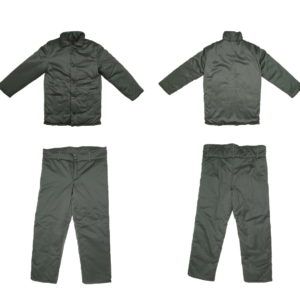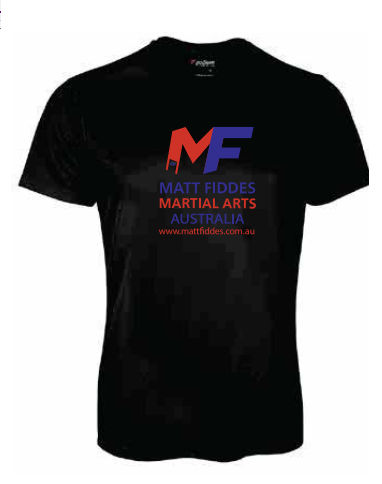Key Takeaways
- Workwear trends for 2025 in Australia prioritise lightweight, durable fabrics and versatile designs to meet the diverse needs of industries such as construction, hospitality, and the corporate sector.
- Compliance with new safety standards like AS/NZS 4602.1:2024 is driving demand for high-visibility clothing and robust, functional materials, especially in outdoor and high-risk environments.
- Sustainability is a key influence, with businesses increasingly choosing eco-friendly workwear options made from recycled fibres and organic cotton to align with environmental goals and brand reputation.
- Customisation and branding through screen printing and embroidery are on the rise, with companies seeking distinctive, comfortable uniforms to promote team unity and professional image.
- Trends also focus on inclusivity and adaptability, featuring gender-inclusive fits and adaptive closures to support workforce diversity and accessibility.
- Hybrid and flexible office attire is gaining traction, with moisture-wicking fabrics, relaxed yet professional silhouettes, and easy layering pieces enabling staff to transition seamlessly between office, field, and remote work.
Workwear trends are evolving quickly as Australian businesses look for practical yet modern solutions. In 2025, we’re seeing a shift towards lightweight fabrics, durability and designs that fit a broad range of industries—from construction and hospitality to schools and corporate teams. As screen printing specialists, we’ve noticed increasing demand for custom uniforms that balance comfort with a professional look.
With more companies seeking branded workwear that lasts, the focus is on materials like ripstop and hi-vis fabrics, along with versatile styles suitable for both men and women. Understanding these workwear trends helps us deliver screen-printed uniforms that meet the needs of today’s workforce.
Key Influences Shaping Workwear Trends in 2025
Demand for innovative workwear in Australia drives us to adapt fast. Advancements in fabric technology, updated safety standards and evolving workforce demographics shape what we source, print and supply.
Updated Safety Standards
New Australian safety regulations impact workwear trends in 2025. High visibility clothing must follow strict guidelines, like the AS/NZS 4602.1:2024 compliant gear, used across industries such as construction, mining and logistics. Bright colours and reflective tape make hi vis workwear Australia-wide highly visible, boosting safety during day and night shifts.
Sustainability and Eco-Friendly Options
Eco-conscious choices now influence purchase decisions. More clients ask for apparel made from recycled fibres, organic cotton and durable, low-impact dyes. Sourcing and recommending sustainable options isn’t just a passing phase—more public and corporate buyers want greener workwear, including high visibility jackets and custom uniforms.
Customisation & Branding
Custom uniforms now dominate many workplaces, moving logo printing, embroidery and screen print services into focus. Screen printing vs embroidery remains relevant as both offer unique looks—printing logos on shirts works for bold branding, while custom embroidered uniforms deliver a professional, textured finish. Scream Print Screenprinting helps businesses align branded gear with team image, raising our clients’ profile and promoting unity.
Comfort and Fit
Workwear for tradies, hospitality, and professional environments now caters to a wider demographic. Lightweight ripstop fabrics and specialised women’s workwear Australia options ensure comfort for all workers, with breathable designs and inclusive sizing. Examples include work shirts, polos and tailored high visibility jackets that look sharper and feel easier to move in.
Digital Ordering and Ease of Access
Ordering workwear online Australia-wide is now common. Companies want fast, simple access to safety workwear online, uniform printing near me searches, and rapid sampling. Digital catalogues simplify sourcing new work boots, shirts or embroidered workwear, meeting business and safety needs with ease.
Wearable Technology
Technology integrates with work clothing as trends evolve. Smart tags, UV sensors and fabric treatments appear in new ranges, especially for sectors where monitoring conditions boosts safety. Not every workplace uses these yet, but the adoption rate rises every season, with features like enhanced RFID tracking or moisture-wicking improvements gaining traction.
Data Table: Workwear Influences 2025
| Influence Area | 2025 Trend Example | Popular Keywords |
| Safety Compliance | AS/NZS 4602.1:2024 hi vis shirts | hi vis workwear Australia, durable workwear for construction |
| Sustainability | Recycled-fibre polos | custom uniforms, eco-friendly |
| Customisation | Logo embroidery & print | Logo printing, custom embroidered uniforms |
| Comfort & Fit | Lightweight ripstop, gender-specific fits | women’s workwear Australia, best work boots Australia |
| Digital Ordering | Streamlined online catalogues | screen printing services, order workwear online Australia |
| Technology | Wearable sensors in workwear | reflective workwear for mining |
Shift in the way businesses approach embroidered workwear, screen printing or custom uniforms links every trend. Seamless transitions between technology, compliance and design keep the workwear industry moving forward, ready for what 2025 brings.
Emerging Fabrics and Technologies
New fabrics and digital advancements are reshaping workwear trends in 2025. We’re seeing strong demand for more sustainable materials and smarter uniforms, especially in sectors relying on customised and logo-printed apparel.
Sustainable and Eco-Friendly Materials
Sustainable and eco-friendly materials continue to drive the evolution of workwear for 2025. Brands now offer recycled fibres, organic cotton, and more plant-based fabrics to support company sustainability goals in industries like construction and hospitality. Many businesses are also choosing these options for custom uniforms or logo printing, linking environmental responsibility with professional branding.
Lightweight ripstop fabrics, such as those in hi vis workwear in Australia, help reduce material waste while staying durable for tradies and site crews. Recycled polyester frequently appears in hi-vis shirts, polos, and jackets. There’s a clear move towards AS/NZS 4602.1:2024 compliant gear, so products made from eco materials must still meet high visibility clothing standards in Australia. Choosing greener materials in workwear aligns with both compliance and brand reputation goals.
Smart Textiles and Wearable Tech
Smart textiles and wearable technology are embedding real innovation in custom uniform production. Moisture-wicking and thermal-regulating fabrics now improve comfort in embroidered workwear and screen-printed shirts. Some textiles integrate RFID smart tags or QR codes, offering inventory tracking and faster uniform maintenance—particularly useful for larger teams or where safety gear requires careful audit.
We’re also seeing jacket and polo options with antibacterial, odour-resistant coatings, especially valued in kitchens, healthcare, and hospitality brands. Some new work shirts and high visibility jackets for construction or mining come with embedded reflective yarns, boosting onsite safety. When ordering workwear online in Australia or consulting with screen printing services, customers increasingly expect technical details like breathability, UV protection, or built-in sensors for monitoring working conditions.
Advanced fabric technology and evolving digital features are setting the pace for workwear trends in 2025, especially as businesses blend comfort, compliance, and standout branding through screen printing or custom embroidery.
Popular Silhouettes and Styles
Workwear trends for 2025 focus on ease and versatility, blending practical shapes with details that fit diverse jobs. Choice materials like lightweight ripstop and hi-vis meet compliance, while relaxed fits and multi-purpose pieces appear across industries.
Relaxed Fits and Comfort-Focused Designs
Relaxed fits and comfort-focused designs lead in workwear trends for 2025. Wider cuts and ergonomic tailoring give staff freedom to move. We see this in “workwear for tradies”, such as construction and mining, where roomy shirts, flexible cargos, and stretch waistbands are frequent picks. Women’s workwear in Australia now matches these relaxed shapes, integrating fit and movement for different body types.
Padded collars and contoured seams turn even “AS/NZS 4602.1:2024 compliant gear” into gear you can wear all day. Companies choosing “custom uniforms” often request these relaxed shapes to boost team comfort. Soft materials like moisture-wicking cotton blends or anti-microbial polyester are present in “screen printing services” or “embroidered workwear” ranges, adding day-long wearability and easy care.
Versatile Layering Pieces
Versatile layering pieces consistently emerge as go-to options for variable work settings and shifting outdoor temperatures. Button-up “durable workwear for construction” jackets, midweight zip hoodies, and lightweight shell vests adapt to hi vis workwear in Australia and suit trades, logistics, or food service.
Layering jackets and vests come in “high visibility jackets” and reflective options, meeting “hi vis clothing standards Australia”. Mixable tops, such as polos beneath fleece sweaters, work for both “logo printing” and “custom embroidered uniforms”, giving teams a neat, compliant look as they move between tasks or climates.
Layering supports easy team-wide updates—like adding thermal liners or waterproof outers—without replacing the base uniform. This modular approach now dominates “order workwear online Australia” services, supporting ongoing compliance and comfort across industry seasons.
By combining these current silhouettes and styling strategies, we keep teams comfortable, safe, and visible—no matter the sector or climate.
Trending Colors and Patterns
Bold colour palettes dominate workwear trends in 2025, with Australian businesses embracing distinct combinations for standout visibility and branding. Hi-vis yellow and orange remain essential across AS/NZS 4602.1:2024 compliant gear, with brands prioritising saturated pigment for reliable high-visibility jackets, polos, and reflective workwear for mining and construction. Greys, navy, and charcoal serve as adaptable base shades. These neutrals feature heavily in embroidered workwear for corporate and hospitality settings, often paired with bright accent trim or piping to enhance team identity.
Colour blocking ranks high for tradies, especially in work shirts and outerwear. Teams go for strong contrast and layered shades. Two-tone split panels, particularly those highlighting hi-vis sections, support safety workwear requirements while allowing brands to use printing logos on shirts that reinforce a confident company image.
Brand recognition and team unity remain central, with logo printing and embroidery across collars, chest pockets, and sleeves. Custom embroidered uniforms align with these trends, offering a premium finish that complements rich fabrics and vibrant colours. As businesses increasingly turn to screen printing services and uniform printing near me providers, we notice even small adjustments in tone or pattern elevate simple looks to convey professionalism and compliance.
Workwear for tradies in 2025 incorporates durable ripstop fabrics and tear-resistant patterns. These combine utility with branding and are visible in jackets, trousers, and caps designed to withstand tough outdoor settings. Patterns like micro-check, digital grid, or reflective inserts increase visibility and match current workwear trends 2025, especially for high-rotation industries.
Below, we summarise core trending colours and patterns:
| Trend | Examples | Context |
| Hi-vis brights | Yellow, Orange | hi vis workwear Australia, AS/NZS 4602.1:2024 compliant gear, safety |
| Core neutrals | Navy, Grey, Charcoal | Corporate polos, restaurant teams, screen printing vs embroidery |
| Colour blocking | Two-tone contrasts, split panels | Workwear for tradies, construction, team uniforms |
| Monochrome and geometric | Black-on-black, subtle stripes | Custom uniforms, hospitality, branding |
| Camouflage and modern prints | Urban camo, digital micro-check | Women’s workwear Australia, logistics, site teams |
| Reflective patterns/inserts | Tape, piping, segmented blocks | Mining jackets, durable workwear for construction, high visibility gear |
Awareness of these trending styles helps us create Scream Print Screenprinting solutions that don’t just meet compliance but set businesses apart visually—whether that’s through vivid logo placement or subtle, stylish pattern integration.
Gender-Inclusive and Adaptive Workwear
Gender-inclusive and adaptive workwear defines one of the most important workwear trends for 2025 as teams get more diverse. Designs now focus on offering fits for all genders, ages and body types. Australian brands, responding to industry demands, have started producing ranges with ergonomic cuts, flexible waistbands and extendable lengths, which suit a broader spectrum of wearers. For example, women’s workwear in Australia uses tailored silhouettes and adjustable features for comfort across different tasks, meeting the sector’s changing expectations.
Adaptive workwear also addresses staff with accessibility needs. Garments use magnetic fastenings, low-profile seams and reinforced stress points for convenience and durability. These modifications are especially relevant in fields like healthcare, education, and construction. Durable workwear for construction now features relaxed but protective styling, supporting worker mobility and meeting hi vis clothing standards in Australia via features like segmented reflective trims and colour-blocked panels.
Uniform printing and custom uniforms have embraced this shift, giving companies the ability to offer gender-neutral uniforms enhanced with embroidered workwear details or logo printing. For screen printing services, using soft, stretch-compatible inks ensures that graphics stand out on all fabric types, from moisture-wicking polos to cotton drill pants. These advances let teams display their brand consistently, without limiting wearability or comfort.
Supply data in the table highlights market priorities:
| Workwear Feature | Key Example Contributions | Context Use |
| Ergonomic fits | Adjustable work pants, flexible shirts | Construction, mining, service industries |
| Adaptive closures | Magnetic buttons, accessible zips | Healthcare, aged care, logistical operations |
| Hi vis, AS/NZS 4602.1:2024 gear | Safety vests, colour-blocked jackets | Outdoor, warehouse, high-risk environments |
| Gender-inclusive ranges | Unisex polos, extended sizing, tailored women’s apparel | Corporate, trades, schools |
| Custom branding | Logo embroidery, screen printing vs embroidery | Small business, sport, retail, hospitality |
Offering AS/NZS 4602.1:2024 compliant gear has become standard across new releases, especially for hi vis workwear in Australia and reflective workwear for mining. These garments often use lightweight ripstop construction, weather-resistant coatings, and mesh panels to suit variable field conditions.
Through embracing gender inclusivity and adaptive workwear, we support workplace safety, comfort, and team cohesion. By partnering with suppliers that provide broad size runs and flexible features—while using logo printing and embroidery that lasts—organisations create welcoming, practical environments for everyone on the floor.

The Rise of Hybrid and Flexible Office Attire
Hybrid and flexible office attire shapes workwear trends in 2025, led by shifting work patterns in Australia. Teams moving between home, on-site, and coworking spaces want custom uniforms that balance comfort, performance, and a smart appearance. Screen printing services and logo printing are now requested for polos, softshell jackets, and lightweight layers designed for versatility.
Core Features in Hybrid Office Attire
- Moisture-Wicking Fabrics
Moisture-wicking fabrics, including blended poly-cotton and lightweight ripstop, keep staff comfortable during commutes and in dynamic office climates.
- Smart-Casual Silhouettes
Relaxed tailoring in custom uniforms, such as polos, chinos, and soft vests, fits professional settings while remaining comfortable for remote workdays.
- Brand Consistency with Embroidery
Embroidered workwear and subtle logo printing on shirts or outer layers support consistent branding, helping teams maintain a cohesive look across varied work locations.
- Easy Layering Pieces
Layering pieces, like slimline jackets and crew-neck knits, allow employees to adjust easily between indoor and outdoor settings, supporting year-round wear.
Key Considerations for Businesses
Balancing comfort and credibility grows vital as more professionals work in hybrid models. Our screen printing vs embroidery service comparison shows direct prints stand out for large, bold logos on casual pieces, while embroidery suits detail-focused applications and outerwear. Businesses sourcing corporate uniforms look for workwear trends in 2025 that offer adaptability, including women’s workwear Australia demands, fitting both modern tastes and compliance needs.
Optimising Uniform Longevity
Workwear maintenance tips gain relevance for hybrid teams regularly rotating gear between office and field use. Keeping embroidered workwear and screen printed pieces in good condition ensures presentations and meetings remain polished, supporting staff confidence wherever work happens.
Sourcing and Printing Custom Attire
Ordering through safety workwear online platforms or searching “uniform printing near me” speeds up access to the latest flexible office styles. We offer custom uniforms with tailored logo printing services and sample supply to streamline the process for evolving office environments across Australia.
Hybrid and flexible attire reflects broader demands for workwear that covers multiple locations and functions without sacrificing team unity or visual branding.
Conclusion
As we look ahead to 2025 it’s clear that workwear is evolving faster than ever before. Businesses that embrace these emerging trends won’t just meet compliance standards—they’ll also create safer more inclusive and visually unified teams.
By staying informed and choosing innovative materials and designs we can ensure our teams feel comfortable and confident on the job. Investing in forward-thinking workwear solutions now sets us up for lasting success in a rapidly changing landscape.
Frequently Asked Questions
What are the top workwear trends for Australian businesses in 2025?
Australian workwear trends for 2025 focus on lightweight, durable fabrics, versatile designs, and customisation. There’s a shift towards eco-friendly options, relaxed fits, and hi-vis materials, driven by updated safety standards and diverse workforce needs.
Why is sustainability important in workwear?
Sustainability matters because businesses aim to reduce their environmental impact. Demand for workwear made from recycled fibres and organic materials is growing, supporting both eco-friendly practices and company sustainability goals.
What materials are popular for workwear in 2025?
Ripstop and hi-vis fabrics lead the way, known for their durability and safety compliance. Recycled polyester, plant-based fibres, and moisture-wicking options are popular for their comfort and sustainability.
How are new safety standards affecting workwear choices?
The introduction of Australian standards like AS/NZS 4602.1:2024 means businesses must choose compliant hi-vis clothing, especially in high-risk industries, to ensure worker safety and meet legal requirements.
What customisation options are trending for uniforms?
Businesses are increasingly choosing uniforms with embroidered or screen-printed logos, as well as personalised colourways and patterns, to strengthen team identity and branding.
Are gender-inclusive and adaptive workwear options available?
Yes, many brands now offer ergonomic, gender-inclusive, and adaptive designs with features like flexible waistbands and magnetic fastenings, ensuring greater comfort and accessibility for all team members.
How is technology influencing workwear?
Technological innovations include smart fabrics that manage moisture, provide thermal regulation, or include RFID tags for tracking. Digital ordering platforms also make it easier to source and customise uniforms.
What colours and patterns are popular in workwear for 2025?
Bright hi-vis yellows and oranges are essential for visibility and compliance, while deep neutrals like navy and grey remain popular. Colour blocking, geometric motifs, and monochrome patterns are emerging trends.
How can businesses ensure their uniforms last longer?
Choose high-quality, durable materials like ripstop fabrics, follow manufacturer care instructions, and invest in repairs or replacements as needed to maximise uniform life and maintain a professional appearance.
How are hybrid and flexible office trends impacting uniform design?
There is a move towards comfortable, performance-focused uniforms that suit both office and remote work. Features like relaxed tailoring, moisture-wicking fabrics, and easy layering pieces are increasingly preferred.



